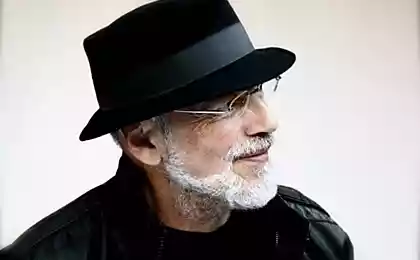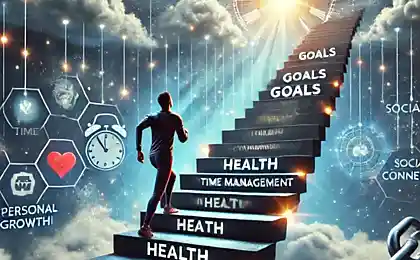195
9 Tips to Decide on Global Change in Your Life
Surely each of us at least once in his life found himself at a crossroads, when the old ways were no longer inspiring, and the new seemed frighteningly uncertain. The feeling of standing on the threshold of something grand, but an invisible barrier prevents you from taking the first step, is familiar to many. Whether it’s changing careers, moving to another country, starting a new stage in your personal life, or radically changing your way of thinking, global change is always fraught with excitement and anxiety. This article is not just a collection of tips, but rather a guide, a step-by-step plan designed to help you overcome internal barriers and confidently step into the new reality.
We live in an age of unprecedented opportunity, but also unprecedented uncertainty. The world is changing at breakneck speed, and the ability to adapt, be flexible, and most importantly be ready for transformation is becoming a key skill. Often we are too attached to the comfort zone, to the habitual, even if this habitual has long ceased to bring joy or development. This attachment, reinforced by the fear of the unknown and possible failure, paralyzes the will, preventing you from taking that decisive step. We tend to exaggerate risks and underestimate our own resources, our own potential.
The purpose of this article is not just to give you theoretical knowledge, but also to inspire action. We will consider scientifically based approaches and practical life hacks that will help you not only make a decision, but also successfully implement your plans. Are you ready to open a new chapter in your life? Then let us begin our journey to change.

1. Understand the true reason for your desire for change.
Before you change anything, it’s important to understand why you want it. What exactly doesn't suit you? What's the underlying motivation? The superficial desire to “change something” often leads to frustration because it does not address the root of the problem. Take a pen and paper, or open a text editor, and answer the questions:
- What exactly is causing me discomfort or dissatisfaction in my current situation?
- What are my true values, and how does my current life match them?
- What do I really want to achieve and what will it give me?
- What happens if I don't change anything?
Lifehack: The Five Why Method
Once you’ve identified a superficial cause, ask yourself the question “why?” four more times, delving into the bottom line. For example, “I want to change my job.” Why? "Because I'm bored." Why is it boring? "Because there is no development." Why is there no development? “Because my skills are not being used.” Why aren't they used? “Because my current position doesn’t match my ambitions.” This method, which came from the Toyota system, allows you to get to the root problem.
2. Visualize the desired result and the path to it
The human brain responds remarkably to visual images. Create a clear and vivid picture of what you want your life to look like after the changes. This is not just a fantasy, but a powerful tool used in psychology and sports to increase motivation and effectiveness. Close your eyes and imagine yourself in a new role, in a new place, with new feelings.
- How would you feel?
- What will you see, hear, feel?
- Who will be next to you?
- How will your daily routine change?
3. Break down the global goal into small, achievable steps.
One of the main reasons why people are hesitant about global change is a sense of its overwhelming magnitude. The goal seems unattainable when viewed as a whole. Break it down into as small, specific, and measurable steps as possible. This approach is called decomposition. For example, if your goal is to move to another country, the first steps may be:
- Examine the visa requirements.
- Make a list of potential cities.
- Start saving a certain amount of money.
- Learn the language.

4. Evaluate the risks and develop a plan B.
Fear of the unknown and possible failure is a powerful paralyzing factor. However, instead of avoiding these fears, it is better to face them face to face. Take it. risk analysis: What's the worst thing that could happen? What obstacles might come your way? For example, when changing a profession, risks may include a temporary decrease in income, the need for retraining, difficulty finding a new job.
Once you have identified potential risks, develop a plan to minimize them or to overcome their consequences. This is called Plan B or contingency plan. For example, if you’re afraid of lowering your income, start building a financial cushion. If you are afraid that you will not find a job, start actively developing the necessary skills and expanding the network of contacts. Having such a plan significantly reduces the level of anxiety and gives a sense of control over the situation.
Example from life: Oprah Winfrey
One of the most influential women in the world, Oprah Winfrey, has gone through many challenges and global changes in her life. She started out in extreme poverty, faced discrimination and career setbacks. However, her ability to analyze the situation, believe in herself and constantly adapt allowed her not only to survive, but also to build a media empire. Oprah was not afraid to take risks, but always carefully prepared for the possible consequences, using each failure as a lesson for further growth.
5. Find support and create a circle of like-minded people.
The human being is a social being, and outside support plays a huge role in the process of change. Tell about your plans to close people you trust. It can be friends, family, mentor or coach. Their support can be expressed not only in moral help, but also in practical advice, connections or simply in the opportunity to speak out.
Look for people who have gone through similar changes or who share your aspirations. Joining interest communities, online forums, or support groups can give you valuable insights, feedback, and a sense of belonging. Remember, you are not alone in your aspirations. Sharing experiences and mutual support greatly facilitate the path to change.
6. Develop flexibility and resilience to uncertainty
Global changes are always subject to uncertainty. It is impossible to foresee absolutely everything. It's important to flexibility (cognitive flexibility) and psychological stability (resilience). This means being able to adapt to new conditions, learn quickly from mistakes, and perceive change as an opportunity for growth rather than a threat.
Practice mindfulness, which helps you stay in the present moment and not sink into anxious thoughts about the future. Learn to accept what you cannot control and focus on what is in your power. Reading psychology books, meditation, and even routine problem-solving exercises can help develop these important qualities.
7. Get rid of what is holding you back.
Often we unconsciously cling to old habits, beliefs, or even things that no longer serve us. Take an inventory of your life. What or who is stopping your progress? These could be:
- Old beliefs: "I'm not good enough," "It's too difficult."
- Toxic relationships that drain your energy.
- Unnecessary things that clutter space and thinking.
- Habits that prevent you from achieving goals (such as procrastination).

8. Start acting despite your fear.
Fear is a natural reaction to the unknown. Getting rid of it completely probably won’t work. The main thing is not to let him paralyze himself. Act in spite of fear. Remember that every new beginning is associated with a certain amount of discomfort. It's normal.
Use it. small-stepThe one we talked about earlier. Take the first, smallest, but most specific step. Feel how this triggers a chain reaction. Each successful micro-step strengthens your confidence and weakens your grip on fear. Don’t wait for the perfect moment or complete absence of doubt. There is no perfect moment. There is only a moment when you decide and start.
Quote of the day: Seneca
We suffer not from facts, but from the way we perceive them. This ancient wisdom of the Roman philosopher Lucius Anneus Seneca reminds us of the power of our perception. Our fears are often exaggerated by our own imagination. When we change our attitude to the situation, we change its impact on us.
9. Celebrate every success and learn from mistakes
The path to global change is not a straight line. There will be ups and downs, successes and failures. It is important to celebrate every success, even the smallest. It helps to maintain motivation and see progress. Praise yourself, reward yourself, and tell your loved ones about your achievements.
It is equally important to learn from mistakes. Mistakes are not failures, but a valuable source of information. Analyze what went wrong, what you could have done differently, and what lessons to learn from the situation. This approach is called iterative Or the principle of "quick dips", where you quickly try, quickly analyze and quickly adjust the course. This helps to improve constantly and avoid repeating the same mistakes.
Conclusion
Deciding to make a global change in your life is one of the most daring and rewarding decisions you can make. It's not just a move or a job change; it's a deep inner transformation that allows you to become a more authentic, realized version of yourself. Remember that this path requires time, patience and perseverance. But the results you get – a sense of freedom, fulfillment, and deep satisfaction – are worth the effort.
Start right now. Take the first, smallest step. Discover new horizons. Your new life is waiting for you and you are fully capable of creating it. Good luck on this exciting journey of change!
Glossary of terms
Self-reflection
The process of deep analysis of one’s own thoughts, feelings, motives and actions. It helps you better understand yourself and your true needs.
Visualization
The technique of creating vivid mental images of desired events, goals or results. It is used to increase motivation and programming the subconscious for success.
Decomposition of purpose
The process of dividing a large, complex goal into smaller, manageable, and easily attainable sub-goals or steps. Simplifies planning and execution.
Risk analysis
A systematic process of identifying, assessing, and prioritizing potential threats or uncertainties that may affect the achievement of a goal. It helps to develop strategies to minimize losses.
Emergency Plan (Plan B)
A pre-designed set of actions designed to be used in the event of unforeseen circumstances or the realization of risks. Provides preparedness for problems.
Flexibility of thinking (cognitive flexibility)
The ability of the brain to easily switch between different concepts, thoughts and tasks, as well as adapt to changing conditions and information. A key skill in the face of uncertainty.
Psychological Resilience (Resilience)
The ability of the individual to successfully adapt to adverse conditions, cope with stress, overcome difficulties and recover from failure. It allows you not to break under pressure.
Mindfulness (Mindfulness)
A state of full attention to the present moment, thoughts, feelings and sensations without judgment. Practicing mindfulness helps reduce stress and improve emotional regulation.
Detoxification
In the context of the article, it is the process of getting rid of anything that hinders progress: old beliefs, bad habits, toxic relationships, or unnecessary things.
Iterative process
A method of operation in which tasks are performed in cyclic stages (iterations), each of which includes planning, execution, verification and adjustment. It allows you to learn quickly and improve.
Anatomy of weakness: How moral justifications are ruining our lives
Which country are you more likely to go to jail? Top 5 countries























